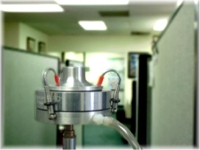|
|
.jpg) |
Indoor Air Quality Studies
Pacific EH&S offers a full range of services devoted to investigating the specific cause(s) of compromised air quality within structures. Our staff of occupational health professionals and engineers are well qualified to identify sources of odors, determine concentrations of airborne and/or surface contaminants, interview building occupants to evaluate exposure potentials and episode trends, perform ventilation system analyses, and conduct literature search and evaluate the potential for disease clusters. Our investigations typically involve the collection of various air samples, and at times may include the collection of bulk and wipe samples to assess surface contaminants. Common indoor air pollutants have included volatile organic compounds, formaldehyde, pesticides, asbestos, dusts, carbon monoxide, carbon dioxide, nicotine, and others. Air contaminant concentrations are determined using OSHA, NIOSH, or other appropriate analytical methods, as well as through the use of direct-reading instrumentation, and all sample analyses are performed at appropriately qualified laboratories. In addition to sample collection activities, other direct-reading instruments are typically used to evaluate air temperature and relative humidity data, illumination levels at work stations and common areas, and ventilation system volumetric flow rates.
|
Copyright (c) 2009 Pacificehs.com. All rights reserved. Please contact Webmaster to report any problems or comments |
 Indoor air quality concerns have become more common since the inception of the "energy efficient" building. The indoor air quality within business office buildings and other structures, particularly those built following the energy crisis of the 1970s, may be adversely affected by a variety of conditions and factors including inadequate general ventilation system design and/or operation, insufficient outside air intake rates, emission of contaminants from building materials and furnishings, stagnant water sources, tobacco smoking, and the use of solvents, pesticides, and other chemical substances.
Indoor air quality concerns have become more common since the inception of the "energy efficient" building. The indoor air quality within business office buildings and other structures, particularly those built following the energy crisis of the 1970s, may be adversely affected by a variety of conditions and factors including inadequate general ventilation system design and/or operation, insufficient outside air intake rates, emission of contaminants from building materials and furnishings, stagnant water sources, tobacco smoking, and the use of solvents, pesticides, and other chemical substances.